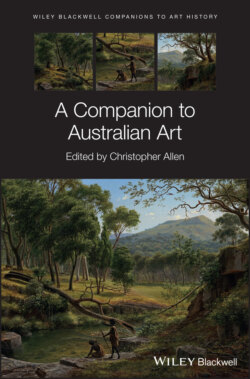Читать книгу A Companion to Australian Art - Группа авторов - Страница 40
A New Phenomenon: The Rise of the Privately Funded Gallery
ОглавлениеOne of the most interesting and influential museological phenomena of the twenty-first century in Australia is the appearance of the private art museum open to the public. Relatively common in Europe and especially North America, the “private” gallery has, in the last 10–15 years, become a welcome and effective part of Australia’s museological offering. It is a subject too complex to be discussed at any length in this chapter, but several notable projects must be acknowledged on account of the impact they have made.
The Hobart-based investor and entrepreneur David Walsh has, quite literally, changed the cultural landscape of Tasmania, fundamentally transforming the cultural tourism economy with his spectacular Museum of Old and New Art (MONA), situated dramatically on a private peninsula jutting into the estuary of the Derwent River in northern Hobart. Walsh’s concept has been to create an architecturally significant building complex (designed by Nonda Katsalidis, with James Turrell’s recently installed and brilliantly lit Pharos highly visible from the river and surrounding land) to house his deliberately eccentric and challenging collection, and changing exhibitions. At the time of opening in 2011 a driving concept of “sex and death” was announced, offered along with cutting-edge navigational technology which allowed the complete absence of labelling and didactics. For example, the downloadable app offered to visitors provided a link to the “Art Wank” series of often cheeky commentaries. Walsh wanted the public’s encounter with exceptional works, such as the Chapman brothers’ Goya-influenced Great Deeds Against the Dead, to be an experience of public museology stood on its head – and he succeeded. The owner-curator’s characteristically outspoken blogs about the collection and exhibitions, and art and life generally, are eagerly read.
In Sydney, Judith Neilson, with her daughter Paris, has created another significant entity, White Rabbit Gallery (opened 2009), inserted within a traditional inner suburban commercial building by Smart Design Studio. Neilson’s collection is dedicated exclusively to contemporary Chinese visual culture in all its forms, often on a monumental scale, installed with verve and courage. The huge collection they have formed, always selecting personally and instinctively, and the exhibitions drawn from it and other sources, have had a transformative effect on the reception of contemporary Chinese art in Australia.
In Victoria, the first of these major new private initiatives was the TarraWarra Museum of Art created and funded by Marc and Eva Besen, with a building designed by Allan Powell on their estate and vineyard in the Yarra Valley to the north-east of Melbourne, opened in 2003. At the heart of the museum is the Besen’s important private collection of mainly mid–late twentieth century Australian art, now constantly enhanced by their curatorial team with major contemporary acquisitions, and a program of often very edgy exhibitions and special installations.
Following a model well established in the US, Melbourne itself now has two dedicated private “house museums” available to the public at designated times and by appointment. The first was architect Corbett Lyons’s and his wife Yueji’s “Lyon Housemuseum” in the suburb of Kew, and such is its success, and such are the demands imposed by the size of their growing collection of essentially contemporary Australian art, that another wing has recently been added.
In addition, the architect Charles Justin and his wife Lea have created the “Justin Art House Museum” project in another Melbourne suburb, deliberately smaller in scale than the former example, conceived as a broad and very personal interactive engagement, often with art and technology a recurrent feature, with the owner-curators creating opportunities for relaxed discussion.
There are numerous other private collections now open to the public on a permanent, or regular, basis, the most recent being John and Pauline Gandel’s astonishing sculpture park on their coastal estate at Point Leo, on the Mornington Peninsula, with important examples of largely contemporary Australian and global sculpture.
A key question, often asked, concerns the long-term, inter-generational future of these projects, the circumstance and terms on which they are likely to continue, and the process by which proper provision is made for long-term continuity and innovation (given that particular collections will represent a taste at a given moment likely to become less “current” as time passes) is one to watch. These private art museums open to the public have very quickly caught the imagination, and garnered the support, of the museum-going public, particularly as the combination of gallery collection with cafés, restaurants and cellar doors reinforces the museum visit as an enjoyable leisure activity.
